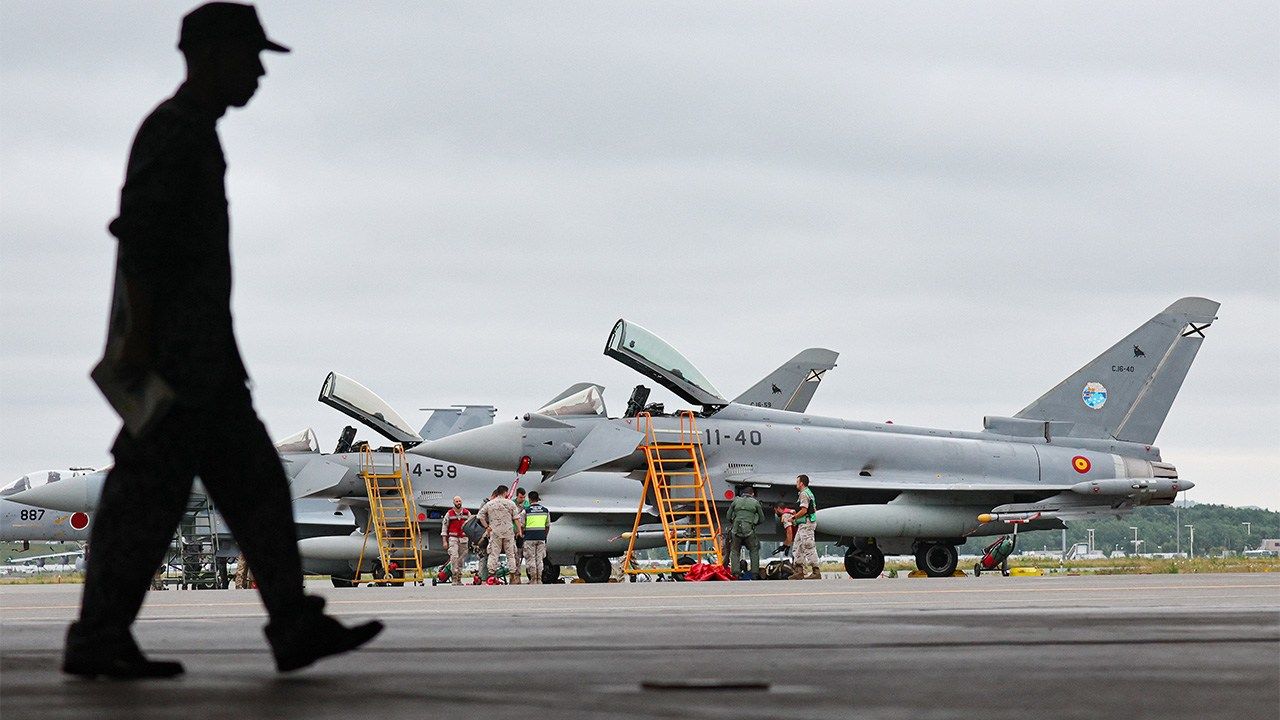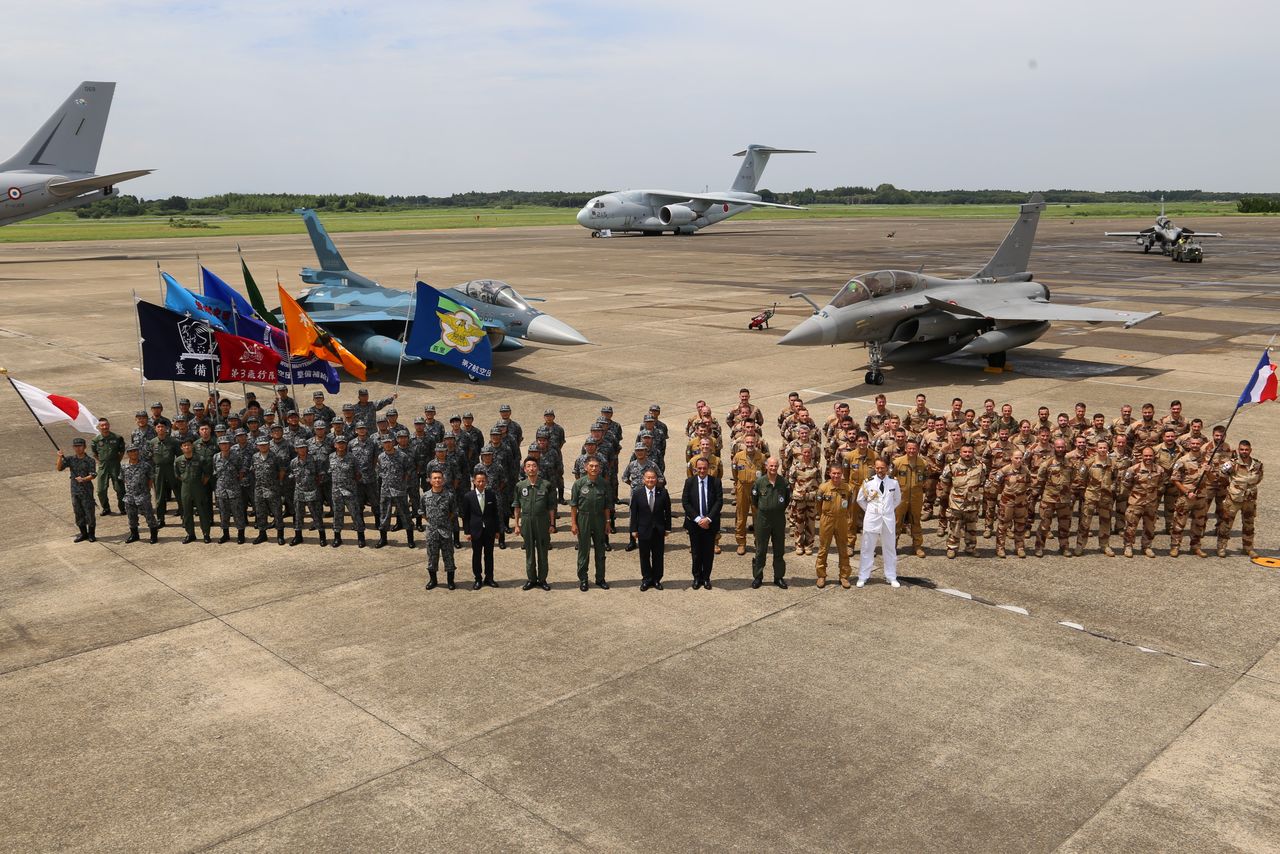
NATO and Japan—Getting Serious About Cross-regional Deterrence
Politics- English
- 日本語
- 简体字
- 繁體字
- Français
- Español
- العربية
- Русский
Japan and the North Atlantic Treaty Organization have been taking significant steps to strengthen dialogue and cooperation in recent years. Prime Minister Kishida Fumio has attended all three NATO summits held during his tenure in Madrid (2022), Vilnius (2023), and Washington, DC (2024). NATO, for its part, is to be commended for organizing sessions with its Indo-Pacific partners, even as the alliance grappled with Russia’s full-scale invasion of Ukraine.
This article reviews the circumstances that have impelled Japan and NATO closer together and assess European military engagement in the Indo-Pacific. It then examines the implications of these developing security links for Europe and the Indo-Pacific, including Japan, in the event of a contingency in either region. It argues that it is time for Japan and NATO to start focusing on the need to strengthen deterrence on a cross-regional basis between the Euro-Atlantic and Indo-Pacific regions.
Japan’s Concerns about the Future of Rules-Based International Order
In light of the deteriorating security environment surrounding Japan, there are an increasing number of people in Japan who question the wisdom of spending precious resources on things like anti-piracy operations in the Gulf of Aden or joint military exercises with distant partners. They argue that those activities are a waste of the country’s precious resources and Tokyo needs to focus more narrowly on problems close to home, such as North Korea and defense of the Senkaku Islands in the East China Sea. This school of thought can be called “Japan first.”
For the past three years, the government of Prime Minister Kishida Fumio has resisted such pressure from the “Japan first” camp. Most conspicuously, the Kishida cabinet has stood firm in its support for Ukraine and imposed an unprecedented level of sanctions against Russia, based on the assumption that “Ukraine today could be East Asia tomorrow,” as repeatedly emphasized by Kishida. Japan’s response to the war in Ukraine is, on one hand, driven by moral and humanitarian considerations. But, on the other hand, it is also for Japan’s own national interest, because Japan’s own peace and independence cannot be defended in a world where other countries are at liberty to alter the status quo by force. Also, Tokyo needed to prevent Moscow as well as Beijing from believing that Japan and other democracies would quickly tire of resistance and allow such aggression to pass.
Japan’s National Security Strategy adopted in December 2022 warns, “We cannot rule out the possibility that a grave situation of this sort could occur in the Indo-Pacific region, particularly in East Asia.” The Kishida cabinet’s posture is predicated on the recognition that broad-based international engagement is indispensable to Japan’s national interest. This view, which could be referred to as “global Japan” as opposed to “Japan first,” constitutes the basis on which Japan’s relations with NATO has been developed.
NATO’s Deepening Concerns about China and North Korea
NATO has its own reasons for engaging with the Indo-Pacific. What takes place in that region increasingly affects the security of the NATO countries as a whole. However urgent the immediate task of deterring and defending against Russian aggression, Europe has come to understand that it cannot afford to ignoring the Indo-Pacific. At the most basic level, it reflects Europe’s deepening mistrust of China since the late 2010s.
The trend has accelerated since Russia’s full-scale invasion of Ukraine in February 2022. From the start there were vague concerns about the potential for cooperation between China and Russia. Over time, those worries were substantiated as it became clear that Chinese semiconductor and other exports enabled Russian arms production. We know also that North Korea has been supporting Russia’s war against Ukraine with large shipments of artillery shells and missiles.
In the Washington Summit Declaration, issued in July 2024, the NATO heads of state and government sharply criticized China as “a decisive enabler of Russia’s war against Ukraine,” noting that its support for the war “increases the threat Russia poses to . . . Euro-Atlantic security.” North Korea’s arms exports to Russia were similarly condemned.
China-Russia and Russia-North Korea cooperation have thus emerged as a serious security concern for NATO, accentuating the need for the alliance as a whole to step up its engagement in the Indo-Pacific.
An Era of Air Forces?
The United Kingdom, France, Germany, the Netherlands, and Spain are among the European countries that have dispatched naval and air assets to Japan this year. The period from June through August in particular witnessed a veritable parade of European naval vessels, warplanes, and transport aircraft.

French and Japanese air force personnel pose at Hyakuri Air Base in Ibaraki Prefecture in July 2024. (Courtesy Kyakuri Air Base’s official X account)
One noteworthy feature of this procession has been the conspicuous presence of air power alongside naval forces. Until recently, European military engagement in the Indo-Pacific had been mainly on the maritime domain. Yet, given that naval deployments from Europe to the Indo-Pacific take at least several months and the number of available and capable vessels are limited, such long-range and long-term deployments cannot be done frequently. As a result, the role of European air forces has increased substantially over the past few years in the Indo-Pacific region.
Of course, air force deployments are not something to be undertaken lightly, either. They entail the dispatch not only of fighters but also of aerial refueling planes to support the journey and transport aircraft bearing personnel and parts needed for maintenance. Even so, air power has a decisive advantage in terms of maneuverability, allowing European assets to reach the region in a matter of days. In the event of an actual emergency, aircraft are likely to be dispatched first to facilitate the gathering of intelligence and to protect their citizens, including in evacuation operations. The necessity and efficacy of Europe’s air assets were vindicated in May 2024, when France deployed fighter jets and transport planes to deal with unrest in New Caledonia, a French territory in the South Pacific.
Is Japan Ready to Seize the Opportunities?
Another noteworthy aspect is that more combat-ready and high-end assets are being dispatched to the Indo-Pacific. At the early stages of a security relationship, naval deployments are generally in the nature of “goodwill port calls” or “goodwill exercises,” but over time, they tend to exhibit a more substantive orientation. The recent deployment of European aircraft carriers and amphibious assault vessels, along with the usual frigates, suggests an intent to enhance and demonstrate Europe’s capability to operate in the region, including in view of a possible contingency in the Taiwan Strait or on the Korean peninsula.
The question is whether Japan can make the most of this stepped-up activity. Japan has been urging Europe to take more interest in the region’s security for years. Now Europe is offering up its engagement on a silver platter. It would be a shame if the opportunity slipped away owing to Japan’s own inability and lack of preparedness to conduct more robust and high-end joint exercises. Japan has a lot of homework to be done.
In addition, Tokyo is highly interested in the lessons that Europe’s militaries are learning through their successive deployments to the Indo-Pacific, because Japan also needs to improve its deployment capabilities in the Indo-Pacific region and beyond.
Simultaneous Conflicts in Europe and the Indo-Pacific?
Yet, there remain skeptical voices about the need to strengthen security and defense cooperation between Europe and the Indo-Pacific. Some argue that it will lead to interregional competition over military assets. In the United States, there is some level of support for the idea that Europe should address Russia while the United States focuses on the bigger challenge of China, and there are some in Japan who are hoping Washington will heed such admonitions.
Indeed, the issue of interregional prioritization and trade-offs is a serious one. The production capacity of US arms manufacturers is being strained to its limit. US stocks of arms and munitions have sunk to alarmingly low levels as a result of America’s military support for Ukraine. This is a real concern from the standpoint of preparedness for an emergency in the Indo-Pacific.
Were the United States to become directly involved in a conflict over Taiwan, it would have no choice but to remove various military assets from Europe and other regions in order to beef up its forces in East Asia. For NATO’s European members, the most pressing issue raised by the specter of a contingency in the Indo-Pacific is how they will fill the void created in their own region. In short, the US military posture in Europe will be affected. NATO needs to take into account such scenarios in its defense planning.
However, this is a problem that cuts both ways. Were Russia to invade one of the Baltic states or anywhere in the NATO territory, Washington would most likely undertake a large-scale troop reinforcement to Europe to defend its NATO allies, which would inevitably impact America’s military posture in the Indo-Pacific. Japan and other US allies in the region need to incorporate this in their defense planning.
One could still argue that the assets and resources required to defend Europe, which is primarily a land domain, are not exactly the same as those needed in the Indo-Pacific, a predominantly maritime domain. Nonetheless, the two theaters share a need for such capabilities as surveillance and reconnaissance aircraft, unmanned aerial vehicles, surface ships, submarines, air defense systems, and missiles. The United States does not possess enough number of such assets to be sent to two theaters simultaneously.
Need to Enhance Cross-regional Deterrence
It is, therefore, high time for Japan and NATO – together with Australia, South Korea, and other US allies in the Indo-Pacific – to start consulting closely with each other, first, regarding how a conflict requiring US intervention in one region is likely to impact the other. Then we must formulate plans to avoid shortages of critical equipment.
Such preparations are the sine qua non of cross-regional deterrence. Rather than compete for resources, we must build a system to optimize complementarity and cushion the impact of activity in one region on the other. NATO, Japan, and Australia can lay the foundations for such a framework.
Japan and NATO have been engaged in practical cooperation for some time now, and while it will continue to play an important role, the strategic stakes for Japan and NATO are much higher. Finding ways to meet the challenge of strengthening cross-regional deterrence will be the biggest test the relationship has faced. The time has come to take Japan-NATO cooperation to the next level, with our sights set firmly on deterrence.
(Originally published in Japanese. Banner photo: Eurofighters from Spain assemble at Chitose Air Base in Hokkaidō on July 19, 2024, for joint training exercises with Japan’s Air Self-Defense Force. © Jiji.)
